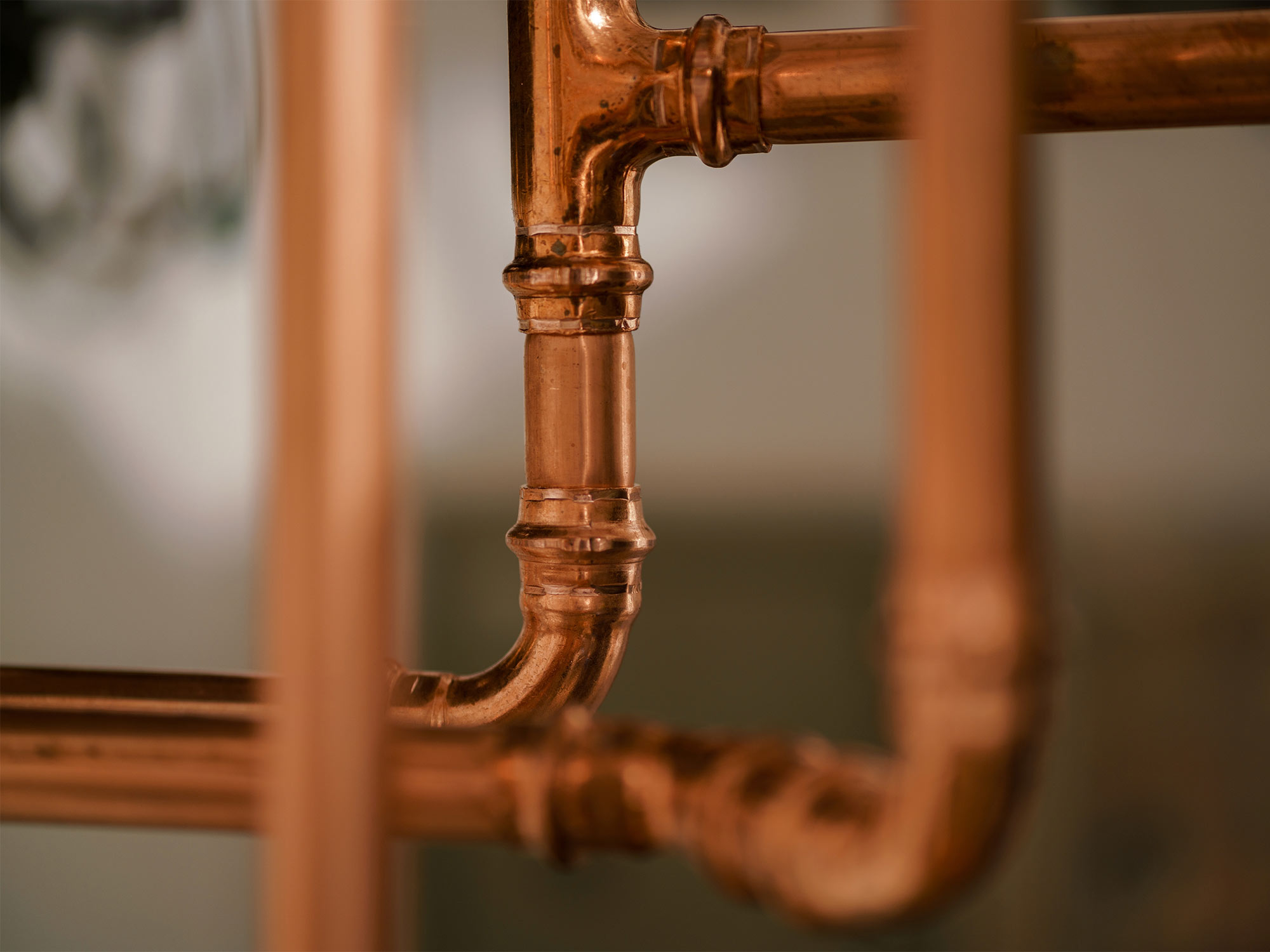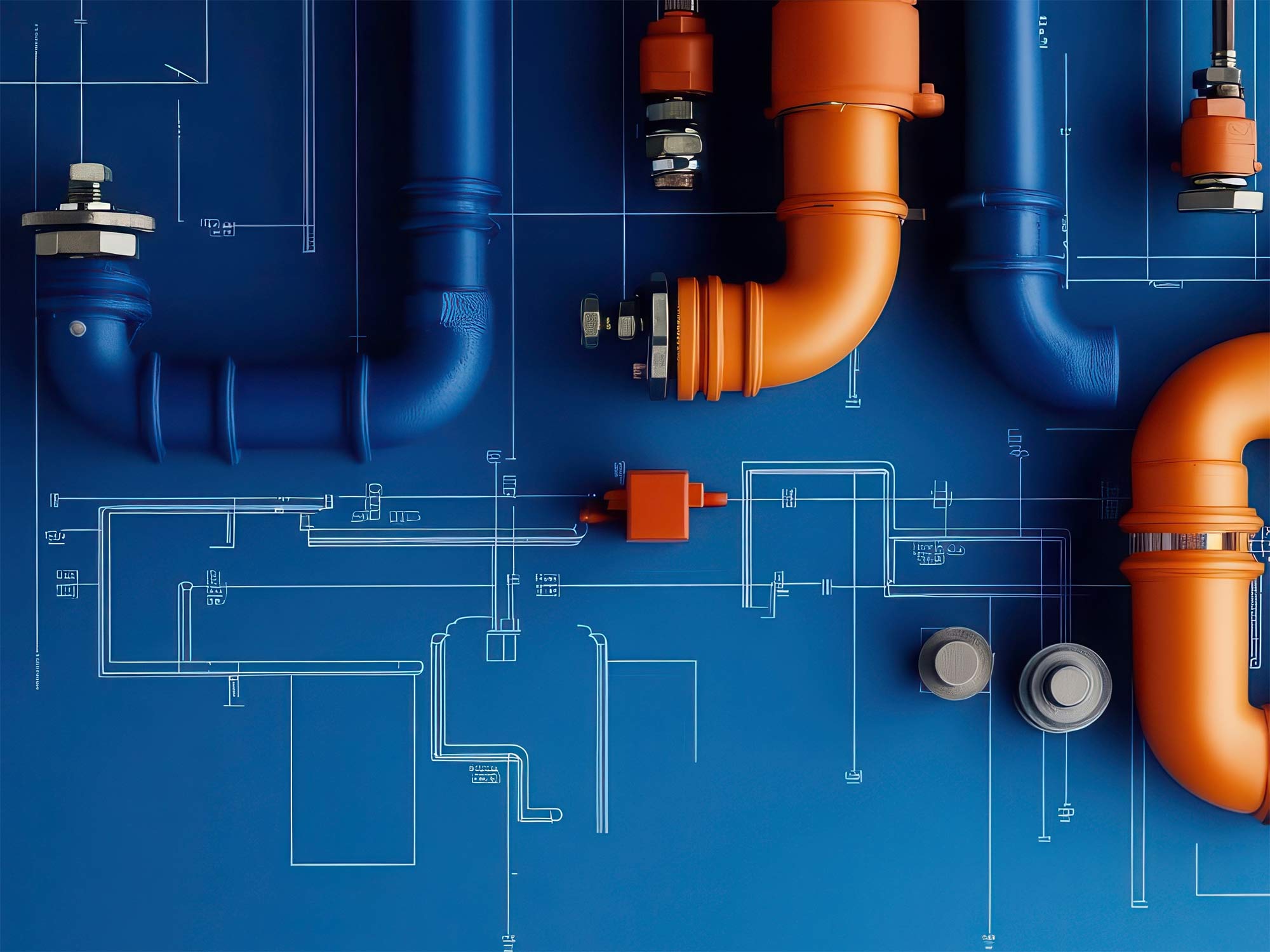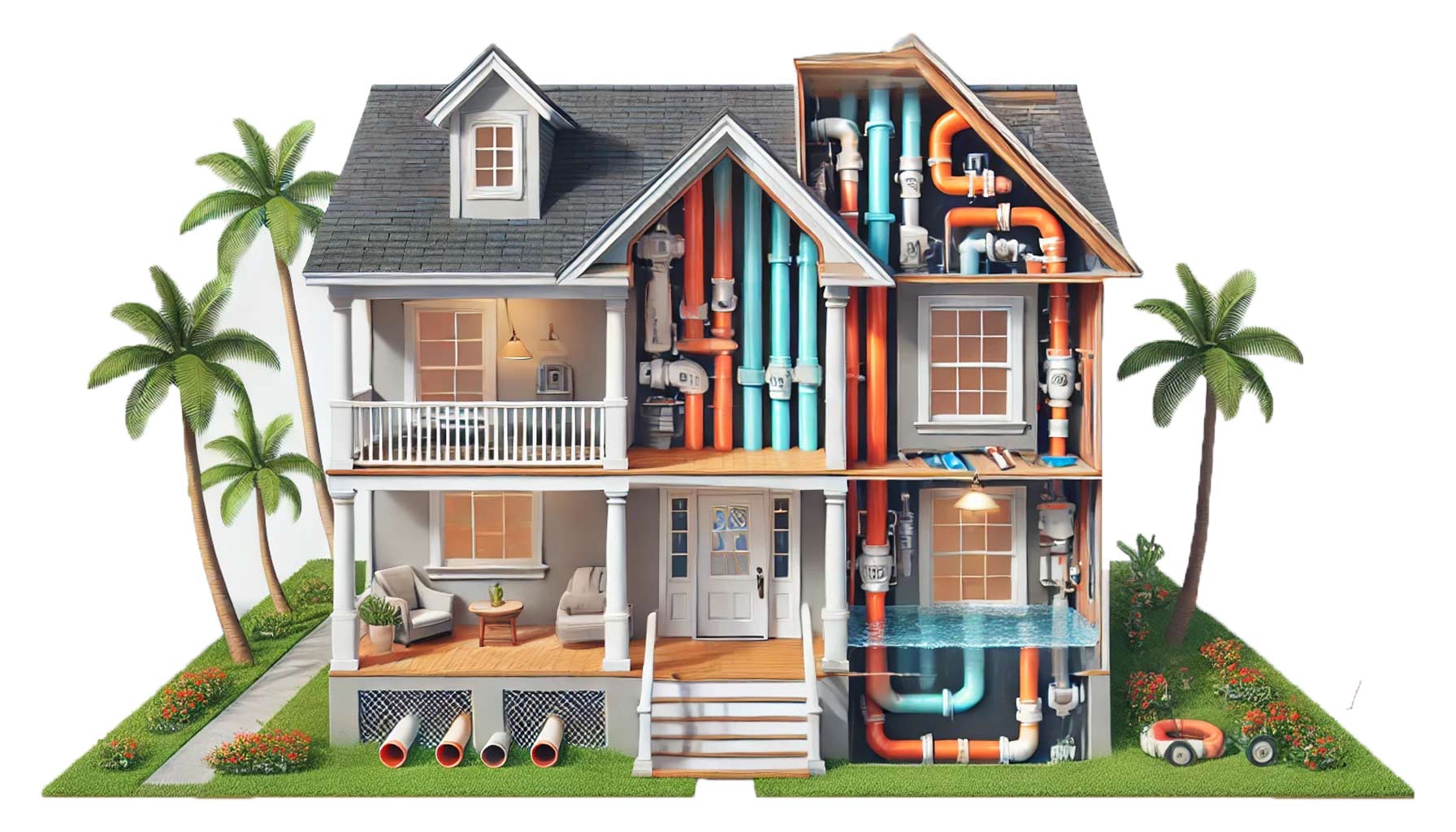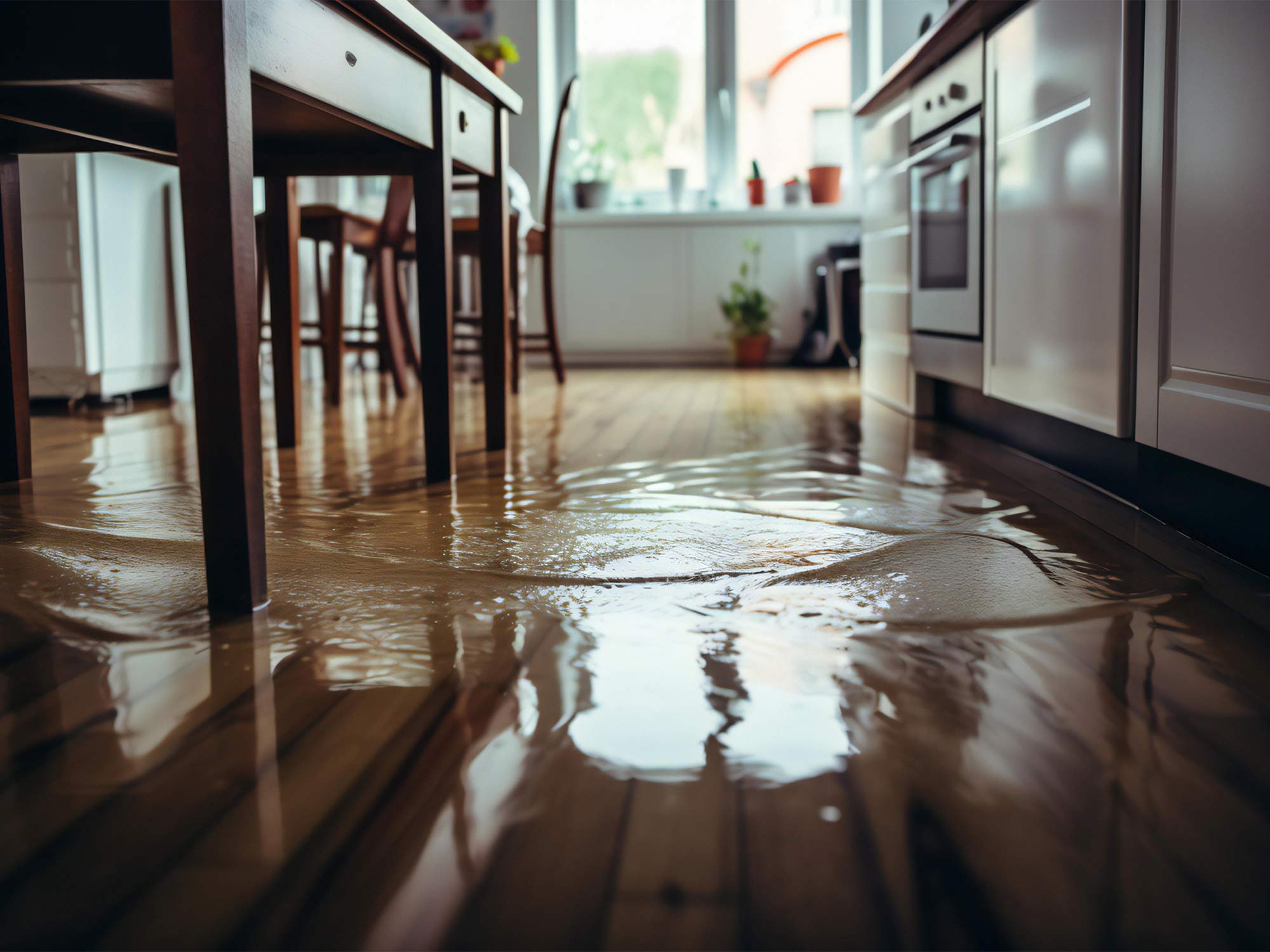When it comes to repiping your home or business, copper pipes are often the go-to material due to their durability, long lifespan, and resistance to corrosion. However, not all copper pipes are created equal. With different types available, it’s important to know which one will best suit your needs, whether you’re tackling a full home repipe or just replacing a section of piping.
In this blog, we’ll break down the different types of copper pipes commonly used for repiping projects and help you decide which is the best fit for your home.
Types of Copper Repipe Materials
To start with the basics, copper pipes come in three main types: Type K, Type L, and Type M. Each type has different wall thicknesses and is suited to different applications. Let’s explore each one in detail to understand their strengths and ideal uses in plumbing systems.
1. Type K Copper Pipe
Wall Thickness: Thickest of all copper pipes
Uses: Underground installations, commercial and industrial applications, and high-pressure systems
Advantages:
- Durability: Type K copper pipe has the thickest walls, which makes it the most durable and resistant to wear and tear. It’s ideal for installations where the pipe will be exposed to extreme pressure or where long-term reliability is critical.
- Ideal for underground and outdoor use: Due to its robust nature, Type K is often used for underground plumbing or applications where the pipe will be exposed to elements like soil or rock.
Disadvantages:
- Price: Type K copper pipe is more expensive than Type L or Type M due to its thicker walls and stronger material.
Best For: Type K is best used for main water lines, underground pipes, and any plumbing systems that require extra durability to withstand high pressure or potential physical damage. It’s commonly used for repiping larger commercial properties or homes in harsh environments.
2. Type L Copper Pipe
Wall Thickness: Medium thickness
Uses: Residential and commercial plumbing, especially for water supply lines
Advantages:
- Versatility: Type L copper pipe strikes a balance between durability and cost-effectiveness. It’s thick enough for most household plumbing needs, making it ideal for water supply lines and heating systems.
- Availability: Type L is the most commonly used copper pipe for residential plumbing due to its affordability and availability in various sizes.
- Good for both indoor and outdoor use: It can be used for both indoor and outdoor plumbing installations, making it versatile for repiping projects.
Disadvantages:
- Less durable than Type K: While Type L is still very durable, it’s not as tough as Type K, meaning it’s more vulnerable to physical damage or exposure to extreme pressure.
Best For: Type L is an excellent choice for replumbing a house, especially for water supply lines, hot and cold water systems, and other common plumbing needs in residential homes. Its combination of strength and cost makes it the go-to option for most homeowners.
3. Type M Copper Pipe
Wall Thickness: Thinnest of all copper pipes
Uses: Low-pressure systems, interior plumbing, and small-scale plumbing projects
Advantages:
- Cost-effective: Type M is the least expensive of the three copper pipe types, making it an attractive option for homeowners on a budget.
- Lightweight: The thinner walls make Type M easier to handle and install, especially in tight spaces or smaller projects.
Disadvantages:
- Less durable: Type M’s thinner walls make it more susceptible to damage from physical impacts, high pressure, or external factors like freezing temperatures. As a result, it may not be the best option for outdoor installations or systems exposed to higher pressure.
Best For: Type M copper pipes are ideal for keeping replumbing house costs low when used in low-pressure systems, interior plumbing, and small projects that don’t require the extra durability of Type K or Type L. It’s often used in new construction or as a budget-friendly alternative for non-critical plumbing lines.
Choosing the Best Copper Pipe for Your Repipe Job
Now that we’ve covered the main types of copper pipe, it’s important to consider your specific needs when selecting the right pipe for your repipe project. Here are some key factors to keep in mind:
1. Pressure Requirements
- If you’re re-piping a high-pressure system (e.g., a main water line), you’ll want to go with Type K for its strength and ability to handle high pressure.
- For standard residential plumbing with normal pressure, Type L will be sufficient and cost-effective.
2. Environmental Conditions
- For underground installations or areas exposed to the elements, Type K is the best option due to its durability and thicker walls.
- For indoor plumbing, Type L is typically the go-to option as it offers a good balance of strength and affordability.
3. Budget
- If you’re on a tight budget, Type M may be the right choice, especially for low-pressure, non-critical plumbing systems. However, it’s important to consider the trade-off in terms of durability.
4. Long-Term Use
- For a long-lasting repipe project, Type K will give you peace of mind with its robust construction. If your goal is to have a plumbing system that lasts for decades with minimal maintenance, Type K is the gold standard.
Additional Considerations: PEX Repipe vs. Copper Repipes
While copper pipes are highly durable, an alternative material you might want to consider for your repipe project is PEX piping (cross-linked polyethylene). PEX has gained popularity for its flexibility, ease of installation, and lower cost compared to copper. It’s particularly useful for retrofitting or replacing old pipes without the need for extensive demolition. This is where you discuss all options with the repipe specialists who provide you an in-person consultation.
However, if you’re specifically looking to go with copper, the types we’ve discussed—Type K, Type L, and Type M—are the primary options to consider. Plus, any plumber worth his salt will not only know these types, but will have an idea of what will work best for your situation upon consultation.
Final Thoughts
The best type of copper pipe for a repipe depends on your specific needs, including the pressure requirements, environmental conditions, and budget for your project. Type L is often the best choice for most homeowners due to its versatility and affordability, making it ideal for residential plumbing. However, for more demanding applications—such as high-pressure or underground systems—Type K copper pipe is the better option. Type M is a cost-effective choice for less critical systems but is not as durable as Type K or Type L. As such, there are pros and cons to each type.
For home repipe jobs, it’s essential to consult with professional plumbers like the Repiping Plumbers in Florida to determine the best copper repipe material for your specific project. Their expertise can ensure that you choose the right pipe and that your repipe is done correctly and efficiently.
💥 If a home upgrade is on the horizon or even required, call the Repiping Plumbers at (727) 271-9943 today to get started!
💥 Our licensed professionals serve 17 counties in Florida and will beat any repipe price you have previously received and even offer 0% down, 0% APR financing options!
💥 Service Area: Pinellas, Hillsborough, Pasco, Hernando, Citrus, Polk, Sumter, Marion, Putnam, Flagler, St. John’s, Duval, Nassau, Union, Bradford, Clay, and Baker counties.




